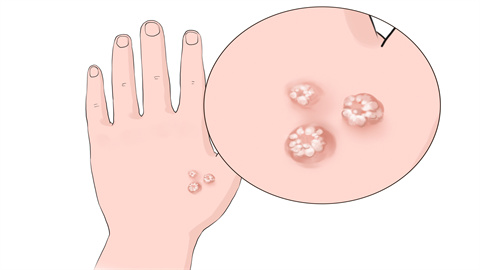Are filiform warts the same as flat warts?
Generally speaking, filiform warts are different from flat warts; these are two distinct skin conditions. Detailed analysis is as follows:

Filiform warts differ significantly from flat warts in appearance, growth locations, and symptom presentation. Filiform warts usually appear as slender, thread-like projections with tiny branches at the tips and are close to skin-colored or brownish. They often develop in areas prone to friction, such as the neck, eyelids, and armpits. They have a soft texture and generally do not cause significant itching or pain. In contrast, flat warts typically manifest as flat-topped papules with smooth surfaces, appearing in light brown or skin tone. They commonly occur on exposed areas such as the face, back of the hands, and forearms, often appearing in large numbers and clustered together. Some individuals may experience mild itching. Although both types of warts are caused by human papillomavirus (HPV) infection, they differ in viral subtypes, morphology, and growth locations, thus classifying them as different types of warts.
In addition, regardless of whether one has filiform or flat warts, scratching should be avoided to prevent viral spread and the formation of new lesions. Treatment should be sought at qualified medical institutions, where appropriate plans can be formulated based on the type and location of the warts. Personal hygiene should also be maintained in daily life, avoiding sharing towels, clothing, or other personal items with others to reduce the risk of viral transmission.




